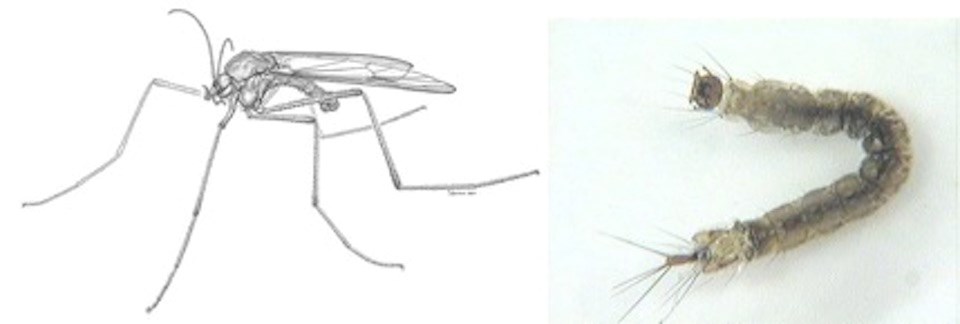Last updated: August 8, 2017
Article
Dixid Midges of Mount Rainier National Park
Importance
The fly family Dixidae, commonly known as meniscus midges for their characteristic larval behavior, is closely related to mosquitoes although they do not feed on blood. In fact, they do not feed at all as adults (Figure 1) and consequently are very short-lived. Dixid larvae (Figure 2) are important ecologically as filter-gatherers of organic matter and prey items for predatory insects and fish. Dixid larvae are frequently encountered during benthic macroinvertebrate surveys conducted by conservation agencies, such as the USFWS, EPA, and NPS. Adults are nondescript midges that are rarely encountered unless specifically sought
out by collectors. Late in the afternoon, near dusk, adult males of some species form small aerial swarms (leks) for mating purposes. Females lay small masses of eggs along the borders of suitable aquatic habitat. The Nearctic fauna is comprised of 45 currently recognized species belonging to three genera: Meringodixa, Dixa, and Dixella (Cook & Peters 1966; Peters & Barbosa 1970; Peters 1981, 1987). Larvae of Meringodixa and Dixella occur in calm waters, while those of Dixa are found in flowing reaches of streams of varying size. Larvae are often associated with streamside vegetation upon which they rest.

Status and Trends
Aquatic habitats sampled during 2011 were of high quality and most contained dixids. Current management practices have therefore been successful in maintaining these resources. Examples of streams types that typically contain dixids (Dixa spp.) are shown below.

Discussion
Collections made in MORA during summer 2011 revealed the presence of seven species of dixid midges. They are as follows: Dixa brevis, D. lobata, D. arge (type locality=Longmire Meadow Stream), D. johannseni, and three new species near D. arge/johannseni and Dixella californica. No specimens of Meringodixa were observed. One small stream crossing Sunrise Road was inhabited by 5 of the 6 species of Dixa known to occur in the Park. Dixella vespertina and an undescribed Dixella species were collected in an area immediately adjacent to MORA, which suggests that both also likely occur within the Park. All of the material obtained has been characterized molecularly (two gene fragments sequenced) and will be useful in completing a systematic treatise of the dixid midges of the Nearctic, which will include formal description of the aforementioned undescribed species.
